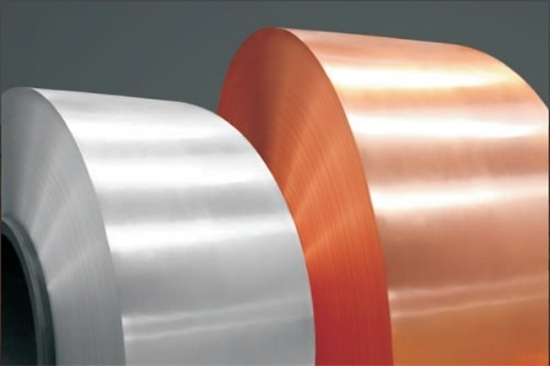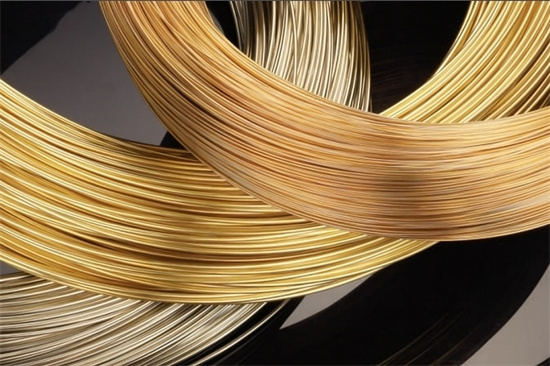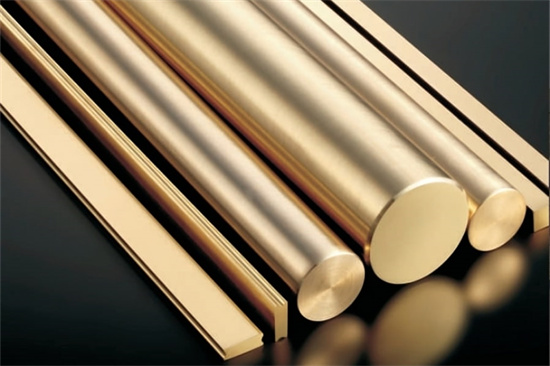


CuSn6: The Alloy You Need for Maximum Durability and Strength
Low MOQ
Provide low minimum order quantity to meet different needs.
OEM & ODM
Provide customized products and design services to meet unique customer needs.
Adequate Stock
Ensure fast order processing and provide reliable and efficient service.
Customer Satisfaction
Provide high quality products with customer satisfaction at the core.
share this article
Table of Contents
If you’re exploring the world of copper alloys, chances are you’ve come across CuSn6, also known as phosphor bronze. This alloy, composed primarily of copper (Cu) and tin (Sn), is well-known for its strength, corrosion resistance, and excellent fatigue properties. Whether you’re working in marine engineering, electrical applications, or precision instruments, CuSn6 offers a unique blend of characteristics that make it ideal for a wide range of applications.
In this in-depth guide, we’ll dive into everything you need to know about CuSn6, from its composition and mechanical properties to its applications, specifications, and pricing. If you’re an engineer, materials scientist, or someone who simply wants to understand the ins and outs of this versatile alloy, you’re in the right place!
Overview
CuSn6 is a copper-tin alloy with approximately 6% tin, offering a combination of good strength, excellent corrosion resistance, and increased wear resistance. This makes it one of the most popular types of phosphor bronze for industries that require a material capable of withstanding high loads, fatigue, and friction.
The addition of phosphorus during the alloying process improves its castability and machinability, making it ideal for producing precision parts, springs, and electrical connectors.
Key Characteristics :
- High Strength: Known for its superior strength compared to other copper-tin alloys.
- Excellent Fatigue Resistance: Ideal for applications under cyclic loading.
- Corrosion Resistance: Performs well in marine and industrial environments.
- Good Wear Resistance: Suitable for components that experience high friction.
- Electrical Conductivity: Moderate, making it useful in electrical and electronics industries.
Composition and Properties
Let’s break down the composition of CuSn6 and take a closer look at the properties that make this alloy stand out in the world of materials.
Chemical Composition
The composition of CuSn6 is carefully controlled to ensure it delivers the desired mechanical and physical properties. The primary elements are copper and tin, with trace amounts of phosphorus added to enhance specific characteristics.
| Element | Percentage (%) |
|---|---|
| Copper (Cu) | 92.0 – 94.0 |
| Tin (Sn) | 5.0 – 7.0 |
| Phosphorus (P) | 0.1 – 0.4 |
- Copper (Cu): Provides the base material with good ductility and thermal conductivity.
- Tin (Sn): Increases strength, corrosion resistance, and wear resistance.
- Phosphorus (P): Enhances machinability and fatigue resistance.
Mechanical and Physical Properties
The mechanical and physical properties of CuSn6 make it a versatile material for a wide variety of applications. Below is a table outlining some of the key properties:
| Property | Typical Value |
|---|---|
| Tensile Strength | 400 – 600 MPa |
| Yield Strength | 250 – 350 MPa |
| Elongation | 15 – 25% |
| Hardness | 90 – 150 HV |
| Density | 8.85 g/cm³ |
| Thermal Conductivity | 50 – 60 W/mK |
| Electrical Conductivity | 10 – 15% IACS |
| Fatigue Resistance | Excellent |
| Corrosion Resistance | High |
Why These Properties Matter
These properties make CuSn6 ideal for applications where strength, durability, and corrosion resistance are critical. For example, its high tensile strength ensures that it can withstand mechanical stresses without deformation, and its excellent fatigue resistance makes it perfect for components subjected to repetitive loading, such as springs and electrical connectors.
Applications: Where and How It’s Used
Thanks to its unique combination of properties, CuSn6 is used in a wide variety of industries. Let’s explore some common applications and how this alloy performs in each.
Common Applications
| Industry | Applications |
|---|---|
| Marine | Bearings, bushings, propeller shafts, fasteners |
| Electrical | Connectors, springs, switch components |
| Automotive | Valve guides, gears, springs |
| Aerospace | Precision components, fasteners |
| Musical Instruments | Strings, reed instruments |
| Industrial Engineering | Gears, bearing cages, wear plates |
Why CuSn6 Fits These Applications
- Marine: CuSn6 excels in marine environments due to its corrosion resistance and wear resistance. It’s often used in bearings, bushings, and propeller shafts where it can withstand saltwater exposure and high loads.
- Electrical: The alloy’s moderate electrical conductivity and good fatigue resistance make it ideal for electrical connectors and springs in switches.
- Automotive: In the automotive industry, CuSn6 is used for valve guides, gears, and springs due to its strength and wear resistance.
- Aerospace: Precision parts in aerospace engineering rely on CuSn6 for its strength and corrosion resistance.
- Musical Instruments: The alloy’s acoustic properties and resistance to wear make it a favorite for strings and reed instruments.
Specifications, Sizes, and Grades
When selecting CuSn6 for your project, it’s important to understand the available specifications, sizes, and grades. Below, we provide a detailed overview of the options available for this alloy.
Specifications and Sizes
| Specification | Details |
|---|---|
| Form | Sheets, strips, rods, wires, bars |
| Thickness Range (Sheets) | 0.2 mm to 20 mm |
| Diameter Range (Rods) | 1 mm to 150 mm |
| Temper | Annealed, cold-worked, hard |
| Standards | ASTM B103, DIN 17662, EN 1652 |
Grades
| Grade | Key Characteristics |
|---|---|
| CuSn6-Soft (Annealed) | High ductility, suitable for deep drawing and forming |
| CuSn6-Hard (Cold-Worked) | Increased strength, used in wear-resistant applications |
| CuSn6-Extra Hard | Maximum strength, ideal for high-load, wear-intensive applications |
Why Specifications Matter
Selecting the right form and grade is critical to ensuring the material meets your specific needs. For example, soft, annealed CuSn6 is ideal for forming deep-drawn parts, while harder grades are better suited for components that require high strength and wear resistance.
Suppliers and Pricing
When it comes to purchasing CuSn6, finding the right supplier is key to ensuring quality and timely delivery. Below, we provide a list of prominent suppliers and estimated pricing for CuSn6.
Suppliers and Pricing Details
| Supplier | Location | Price Range (per kg) | Delivery Time |
|---|---|---|---|
| PhosphorBronze Ltd. | USA | $12 – $20 | 2-3 weeks |
| EuroAlloys Ltd. | Europe | €10 – €18 | 1-2 weeks |
| AsiaMet Corp. | China | $10 – $17 | 3-4 weeks |
| GlobalMetals Ltd. | India | $9 – $16 | 2-4 weeks |
| MarineAlloys UK | UK | £11 – £18 | 1-2 weeks |
Factors Affecting CuSn6 Pricing
- Form: Rolled sheets or strips are generally more expensive than wires or rods due to the additional processing required.
- Grade: Higher-strength grades, such as cold-worked or extra-hard CuSn6, tend to be more expensive.
- Quantity: Larger bulk purchases typically result in lower per-unit pricing.
Advantages and Limitations
As with any material, CuSn6 has its advantages and limitations. Understanding these will help you decide whether this alloy is the right choice for your specific application.
Advantages and Limitations
| Advantages | Limitations |
|---|---|
| Excellent corrosion resistance | Lower electrical conductivity than pure copper |
| High strength and wear resistance | More expensive than brass or standard bronze |
| Good machinability | Limited thermal conductivity |
| Exceptional fatigue resistance | Requires precise heat treatment for specific properties |
| Good workability in annealed condition | May require additional surface treatment for aesthetic applications |
Is CuSn6 the Best Choice for Your Project?
If you need a material with high strength, wear resistance, and corrosion resistance, CuSn6 is likely the perfect option. However, if your project demands high electrical conductivity or thermal performance, you might need to explore alternatives such as pure copper or brass.
CuSn6 vs. Other Copper Alloys: A Comparison
Choosing the right alloy often means comparing it to other materials. Let’s see how it stacks up against other commonly used copper alloys like CuSn8, CuZn37 (Brass), and CuNi10 (Copper-Nickel).
CuSn6 vs. CuSn8 vs. Brass vs. Copper-Nickel
| Property | CuSn6 | CuSn8 | Brass (CuZn37) | Copper-Nickel (CuNi10) |
|---|---|---|---|---|
| Tensile Strength | 400 – 600 MPa | 450 – 650 MPa | 300 – 450 MPa | 300 – 550 MPa |
| Yield Strength | 250 – 350 MPa | 300 – 400 MPa | 100 – 250 MPa | 200 – 350 MPa |
| Corrosion Resistance | High | Very High | Moderate | Excellent (especially in marine environments) |
| Electrical Conductivity | 10 – 15% IACS | 8 – 12% IACS | 28% IACS | 5 – 10% IACS |
| Wear Resistance | High | Very High | Moderate | High |
| Cost | Moderate | High | Low | High |
| Applications | Marine, electrical, automotive | Marine, heavy-duty bearings | Plumbing, decorative items | Marine, heat exchangers, piping |
Key Takeaways from the Comparison
- It offers a balance of strength, corrosion resistance, and wear resistance, making it ideal for marine and electrical applications.
- CuSn8 provides even better wear resistance and is slightly stronger, but comes at a higher cost.
- Brass (CuZn37) is a cheaper alternative with better electrical conductivity, but lacks the wear resistance and corrosion resistance of CuSn6.
- Copper-Nickel (CuNi10) is superior for marine applications, especially where seawater corrosion is a significant concern, though it is more expensive.
Frequently Asked Questions (FAQ)
Here’s a list of some of the most commonly asked questions regarding CuSn6:
| Question | Answer |
|---|---|
| What is CuSn6 used for? | It is widely used in marine hardware, electrical components, springs, and precision instruments. |
| How much does CuSn6 cost? | The price of CuSn6 ranges from $9 to $20 per kg, depending on the form, grade, and quantity. |
| Is CuSn6 corrosion resistant? | Yes, it has excellent corrosion resistance, especially in marine environments and industrial atmospheres. |
| Can CuSn6 be used in electrical applications? | Yes,it offers moderate electrical conductivity and is commonly used in connectors and switch components. |
| Is CuSn6 easy to machine? | Yes, it is known for its good machinability, making it suitable for precision parts and mechanical components. |
| What is the difference between CuSn6 and CuSn8? | CuSn8 has a higher tin content (8%), offering slightly better strength and wear resistance compared to CuSn6. |
Conclusion
It is a highly versatile and durable phosphor bronze alloy that offers an ideal combination of strength, corrosion resistance, and wear resistance. Whether you’re working in marine hardware, electrical components, or precision instruments, this alloy delivers excellent performance in demanding environments.
While it may not be the cheapest material on the market, its long-lasting durability and resistance to wear and corrosion make it a cost-effective choice for industries where performance matters. If your project demands high strength, fatigue resistance, and workability, it may be the perfect alloy for the job.
Ultimately, it strikes a great balance between form and function, making it a solid choice for a wide range of applications.
Maybe you want to know more about our products, please contact us
Get Latest Price
About Met3DP
Product Category
HOT SALE
CONTACT US
Any questions? Send us message now! We’ll serve your request with a whole team after receiving your message.

Metal Powders for 3D Printing and Additive Manufacturing
COMPANY
PRODUCT
cONTACT INFO
- Qingdao City, Shandong, China
- [email protected]
- [email protected]
- +86 19116340731








